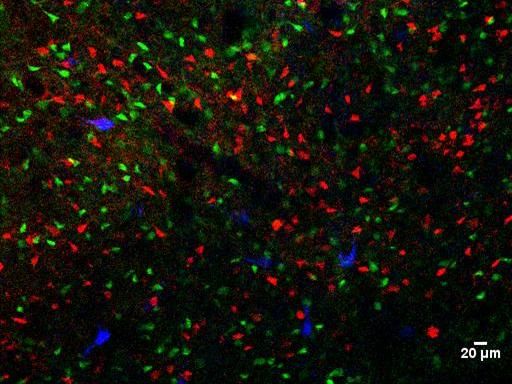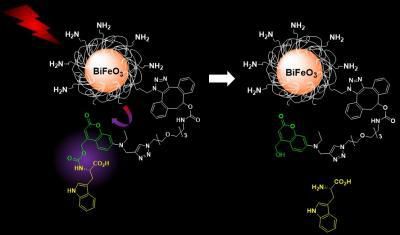Developing wheat with resistance against Mycosphaerella fungus difficult but closer than ever
Developing wheat varieties with resistance to the feared leaf blotch disease may be very difficult, but recent studies carried out at Wageningen UR have brought it closer than ever. This is clear from research of the Dutch-Tunisian Sarrah Ben M’Barek-Ben Romdhane who obtained her doctorate on this subject at Wageningen University, part of Wageningen UR. Ben M’Barek and her colleagues mapped the complete DNA of the pathogen that causes septoria leaf blotch - the fungus Mycosphaerella graminicola. They showed that the fungus can lose entire chromosomes during sexual reproduction without any visible effect. Ben M’Barek also found that the fungus can attack wheat plants in various ways. These findings explain why it has been so difficult thus far to develop resistant wheat varieties. The new knowledge provides clues that will stimulate the development of those varieties, increasing the security and sustainability of food production.
Wheat is the main food crop for regions such as North Africa and the Middle East, where it is severely threatened by the fungus Mycosphaerella graminicola, the cause of so-called septoria leaf blotch. Unfortunately, as no useable wheat varieties are resistant against the fungus, it has to be controlled with fungicide and continues to reduce food yields. This could be changed by greater insight into the genetics of the pathogen and a better understanding of the interaction between pathogen and plant.
During her research, Sarrah Ben M’Barek was, among other things, one of the authors of the publication of the complete DNA (the genome) of the Mycosphaerella fungus. The research showed that the fungus can successfully survive and disseminate even when entire chromosomes were lost from the total of 21 chromosomes. Thus, when the fungus sexually reproduces it can lose a number of chromosomes without consequence or absorb one of the parents extra chromosomes without having an effect on the harmfulness of the fungus. As a result the Mycosphaerella fungus is genetically very flexible, which is a challenge for its control either by fungicides or resistance breeding.
Ben M’Barek also studied how the fungus successfully attacks the plant and discovered that the fungus can enter the plant undetected because it is not recognised as a threat by the plant. In addition the fungus can produce a toxin that affects the plant.
In response to these findings, plant breeders look for wheat varieties, wild varieties for instance, that are able to recognise –by resistance genes- the fungus as an attacker by identifying a specific protein, a so-called effector. Cross breeding can then lead to varieties that identify the effector. Additionally, plant breeders need to find wheat varieties that are insensitive to the toxin produced by the fungus. This can then be used to develop wheat varieties that lack such toxin sensitivity genes and hence are resistant to the fungus types that produce the toxin . Both type of interactions (resistance gene/effector and sensitivity gene/toxin) play a role in Mycosphaerella-wheat interactions , which explains why it is so difficult to develop resistant wheat varieties.
Topics
Organizations
Other news from the department science

Get the life science industry in your inbox
By submitting this form you agree that LUMITOS AG will send you the newsletter(s) selected above by email. Your data will not be passed on to third parties. Your data will be stored and processed in accordance with our data protection regulations. LUMITOS may contact you by email for the purpose of advertising or market and opinion surveys. You can revoke your consent at any time without giving reasons to LUMITOS AG, Ernst-Augustin-Str. 2, 12489 Berlin, Germany or by e-mail at revoke@lumitos.com with effect for the future. In addition, each email contains a link to unsubscribe from the corresponding newsletter.
Most read news
More news from our other portals
Last viewed contents
William_Holmes_Crosby,_Jr.
Rubella
Chromosomal_translocation
Anton_Skulberg
Biotinylated_retinoids

Study points to fast-acting drug for OCD



















































